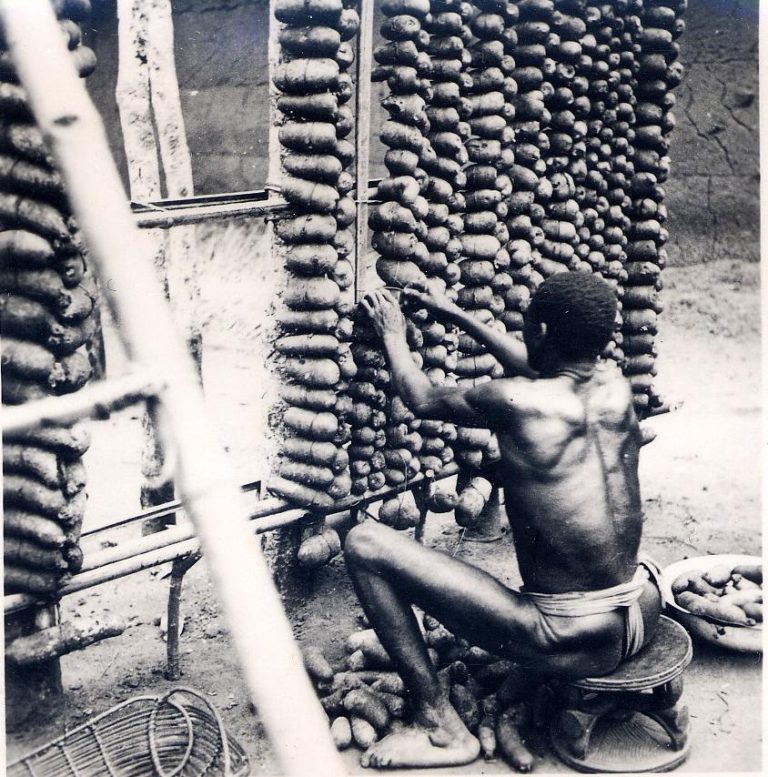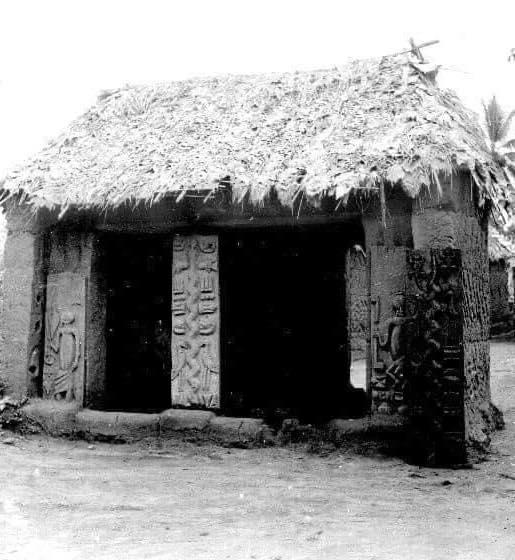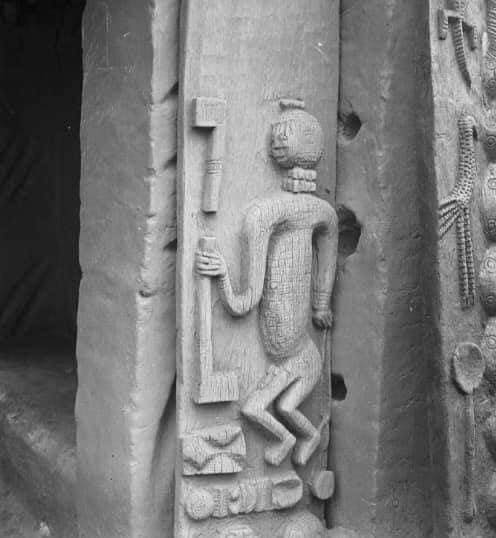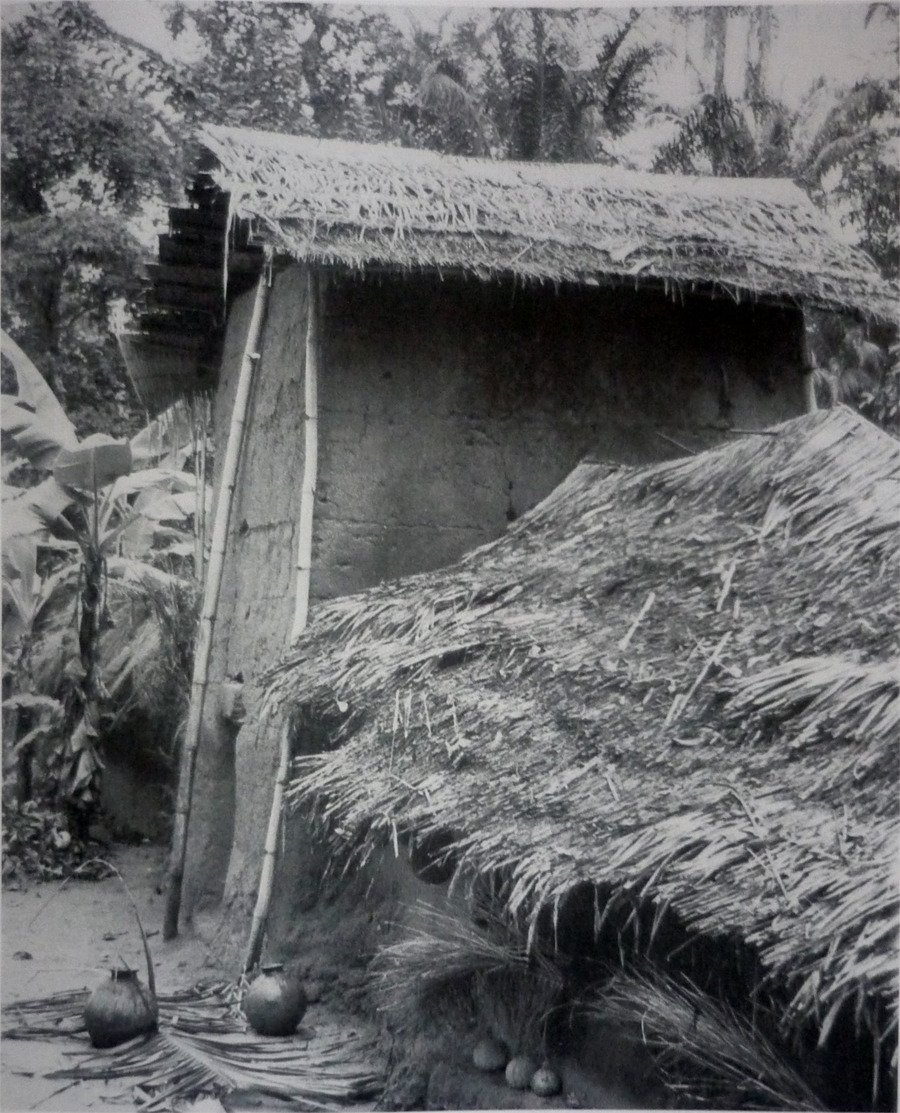
The war towers, such as this one in Awka Nibo Nise, were defensive structures constructed during the Atlantic slave trade. Built within walled family compounds, they served as lookout points, safe houses, and symbols of resilience.
The war towers of Igboland, locally known as ụnọ aja or obuna enu, stand as a testament to the resourcefulness and resilience of the Igbo people during the era of the Atlantic slave trade. These defensive structures were built in response to frequent raids that targeted Igbo communities, especially in today’s Anambra and Imo States, during the 18th and 19th centuries. Beyond their practicality, they became powerful symbols of communal vigilance, cultural pride, and architectural ingenuity.
Origins and Functions of War Towers
Elevated Lookout Points
The primary function of war towers was to serve as elevated vantage points. Built within walled family compounds, the towers allowed communities to spot approaching raiders or intruders from a distance. Some towers featured strategically placed gun holes for active defense, showcasing their role as fortresses.
Safe Houses and Patriarchal Spaces
In emergencies, war towers served as safe havens. Families could retreat to these structures, whose thick mud walls provided protection from intruders. During times of peace, the upper floors of the towers were often the domain of the patriarch, serving as a symbol of authority and a space for solitude.
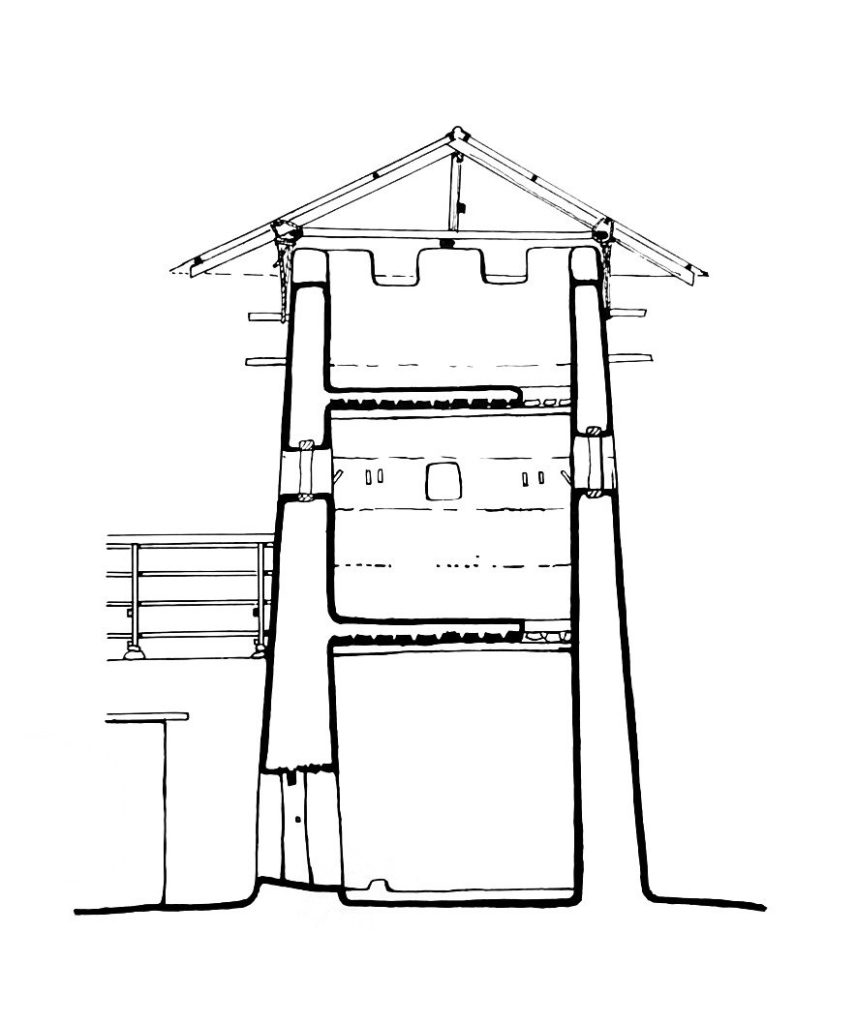
The interior sketch reveals spaciousness that suited both defensive and domestic needs. The upper floor doubled as the patriarch’s quarters during peaceful times and as a secure refuge during emergencies.
Architectural and Cultural Significance
The war towers of Igboland were more than just practical structures; they were a response to the existential threat posed by the Atlantic slave trade. Constructed using mud, thatch, and other locally sourced materials, the towers reflected the ingenuity of traditional Igbo craftsmanship. High walls and narrow openings made them defensible, while their design showcased the strategic thinking of Igbo communities.
These structures are also emblematic of the communal spirit in Igboland, where the safety of the family was prioritized above all. The labor-intensive process of building these towers was often a collective effort, involving extended family members and the community.

This lone tower, weathered by time, stands as a monument to Igbo resilience and a poignant reminder of a vanishing architectural heritage.
Legacy of War Towers
While the Atlantic slave trade is no longer a threat, the legacy of these war towers endures. They remind us of a time when Igbo communities had to adapt to survive in a hostile environment. Today, only a few towers remain, eroded by time and neglect, but they continue to serve as powerful symbols of resistance and resilience.
Photographs and sketches of these towers, such as those taken by Zbigniew Dmochowski, provide valuable insights into their design and significance. These images preserve the memory of Igbo architectural ingenuity and their capacity to adapt to periods of immense adversity.
Join the Conversation
Have you encountered any war towers during your travels across Igboland? Does your family have stories about these structures or their use? Share your experiences in the comments section below!
Reference
Dmochowski, Z.R. An Introduction to Nigerian Traditional Architecture: South-Eastern Nigeria. Ethnographica, 1990. See our review below
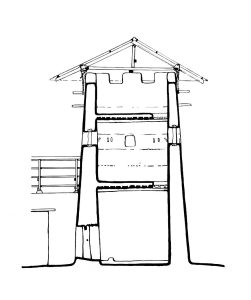 Recommended Books
Recommended BooksAuthor: Z.R. DmochowskiPublisher: Ethnographica; National Commission for Museums and MonumentsPublication Date: 1990Format: HardcoverPages: 152ISBN-10: 0905788281ISBN-13: 978-0905788289Language: English Overview “An Introduction to Nigerian Traditional Architecture: South-Eastern Nigeria: The Igbo-speaking People” by Z.R. Dmochowski is a comprehensive study that explores the traditional architectural styles and practices of the Igbo people in South-Eastern Nigeria. This book is part […]
Discover more from Igbo Archives
Subscribe to get the latest posts sent to your email.


